Where the Knights Templar, Merlin the Magician, and the French Monarchy
are All Bound Together Through The Ultimate Quest
Guest Post by Hayward Gladwin
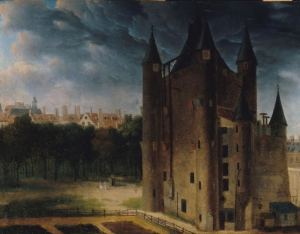 On June 13, 2011, it was announced that The Ultimate Quest treasure hunt had come to an end. It came ten years after the book had first been published. Shortly after, the publishers of the book (Roland Oliver) released an overview of the book’s 5 questions to help readers see how close they had actually come (or not) in solving the puzzle. To do so, and to win the prize, the reader had to answer each of the book’s five questions correctly, while also discovering the correct method and contact for submittal.
On June 13, 2011, it was announced that The Ultimate Quest treasure hunt had come to an end. It came ten years after the book had first been published. Shortly after, the publishers of the book (Roland Oliver) released an overview of the book’s 5 questions to help readers see how close they had actually come (or not) in solving the puzzle. To do so, and to win the prize, the reader had to answer each of the book’s five questions correctly, while also discovering the correct method and contact for submittal.
According to the publisher, the answers to questions 1 & 2 & 5 were generally assumed correct by many of the readers who were following the puzzle. It was stated that the remaining two questions, however, were found to have been answered incorrectly by almost everyone. Questions #3 & #4 pertained to decoding two invitations delivered to the character Richard Fisher, and furthermore to determining the times, dates and locations of the Grail Keepers’ meetings contained therein.
A few weeks after the puzzle was officially over, the publisher was also generous enough to give readers some hints as to where the meetings were to have taken place. They did this by naming the country where the meeting was to have occurred. The first meeting, it was revealed, was to have taken place in France.
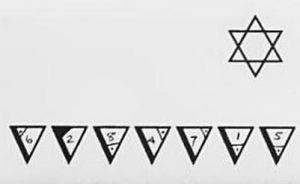 Looking at the first invitation, it appeared in the book as a piece of paper containing symbols and numbers that needed to be deciphered, somewhat like a “Pig Pen” cipher. The cipher in this invitation consisted of several downward-pointing triangles numbered from 1 to 8, which were placed in the order of several lines of text, and contained dots in one of triangles’ three corners. Starting with a triangle numbered “1” and designating a letter of the alphabet to each of the triangles’ corners, the readers could find a way to decode the message. Beginning in the top left corner of triangle #1 with “A” and then the top right corner of #1 with “B”, and onward through the alphabet, the reader could produce the following message:
Looking at the first invitation, it appeared in the book as a piece of paper containing symbols and numbers that needed to be deciphered, somewhat like a “Pig Pen” cipher. The cipher in this invitation consisted of several downward-pointing triangles numbered from 1 to 8, which were placed in the order of several lines of text, and contained dots in one of triangles’ three corners. Starting with a triangle numbered “1” and designating a letter of the alphabet to each of the triangles’ corners, the readers could find a way to decode the message. Beginning in the top left corner of triangle #1 with “A” and then the top right corner of #1 with “B”, and onward through the alphabet, the reader could produce the following message:
“PDXKT Count on the Baker to know where Merlin is imprisoned.”
Several readers on the Quest4Treasure site forum guessed at the meaning of these first five letters, “PDXKT”, and eventually a consensus formed that it was to be read as such:
“P4XKT”. This was based on the logic of the letter “D” being the fourth letter in the alphabet, and the solid-filled corner of the triangle in its position being different than the others, thus indicating a need of change from letter to number. In the end, the message was read to the effect of “Phillip the 4th X’d the Knights Templar”. Which, taken at face value, is actually an historic fact.
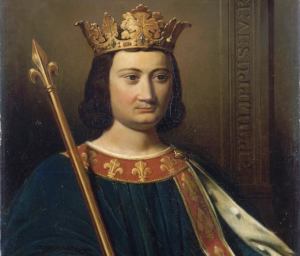
On Friday, October 13, 1307 Phillip IV (“The Fair”) unraveled a plot against the Knights Templar throughout France by arresting all of its members. The significance of this date, and the subsequent end of Knights Templar, helps build a strong case for it also being the correct date of the meeting in the invitation. To support this, if we were to notice the date of the caption above the invite (which stated that the invite was received in 1987) and then subtracted a number which was scrawled at the bottom of it, “680”, we could again arrive at the year of the Templar’s siege and full-scale arrest in, 1307.
Further confirmation was to be found in the remaining part of the clue, which stated “Count on the Baker to know where Merlin is imprisoned”. As one reader on the Quest4Treasure forum commented, “count on the Baker” was also reference to a “baker’s dozen”, or “13”. Therefore, a reference to Friday the 13th. Furthermore, “counting on the baker” could also provide us with a potential time for the meeting. Taken in the 24-hour system, “13” could stand for 13:00, or, 1PM.
These did seem like strong possibilities in finding the correct date and time for the meeting, but it also seemed important at this point to remember that the clue stated we should “count on the baker” to know where Merlin is imprisoned, rather than simply when.
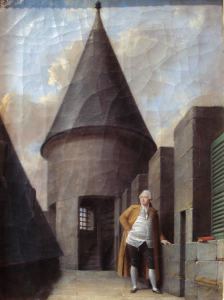
As suggested by another, “The Baker” could also be a reference to King Louis XVI, who was once called “The Baker” (with his wife Mary Antoinette as the “The Baker’s Wife”, and his son Louis XVII as the “The Baker’s Little Apprentice”). This occurred after when, during the French Revolution, the royal family was captured in an attempt to flee France in the face of Revolution and certain persecution. As the family was being returned to Paris and faced execution, a crowd that had formed around them belittled them with this moniker. Varying sources disagree as to the significance of this term, “The Baker”, however, its existence seems commonly accepted as fact. On The Ultimate Quest forum, this theory was never further explored. Through further investigation though, a very interesting connection does exist between Louis XVI, The Knights Templar, and the mythical character of Merlin.
If we begin by taking a closer look at what happened to Louis XVI in the late 18th century, right after his capture, we discover that he was imprisoned in a Temple known as the “enclos du Temple” (Enclosure of the Temple), in the “Tour du Temple” (Tower of the Temple) in Paris. This temple was built by the Knights Templar in the mid-13th century. The Tour du Temple appears quite significant in French history as it was also the last place where the Capetian Dynasty stood in power over France, and where their uninterrupted reign that had lasted from 978 until 1792 had finally come to an end. The temple and enclosure were later destroyed by Napoleon’s nephew (Napoleon III) in the early 1800s.
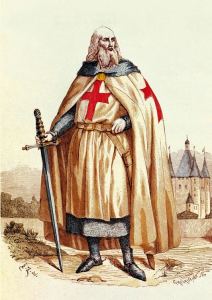
Grand Master Jacques de Molay (with Tour du Temple in the background)
Interestingly, it was through an earlier member of the Capetian dynasty, the aforementioned Phillip IV, who ordered the persecution of the Knights Templar in 1307, and who was also behind the execution of the last Grand Master of the Templars, Jacques de Molay, by fire, in 1314. It would seem fitting, therefore, that Phillip IV’s descendent, Louis XVI, would find final domicile as prisoner in a tower that was built by the Knights Templar before their own demise more than 500 years prior. It was in this very Tower where Grand Master Jacques de Molay himself had been captured, kept prisoner, and interrogated in the early stages of the Templars’ persecution at the hands of Phillip IV. And perhaps by poetic justice, a curse which de Molay had stricken upon Phillip IV and his descendants on the day of his execution had somehow come true with Louis XVI’s eventual execution by guillotine on January 21, 1793. Thus we might have even further reason to find significance in the “P4XKT” letters, with the Tour du Temple playing an important role in the events that transpired after this event.
Could the Tour du Temple have been the meeting place of the secret Grail Keepers, as was lead to by the clues found in the first invitation? If so, what connection does this have with Merlin?
To address the subject of Merlin, according to very early stories, Merlin was an old wizard, sorcerer, magician, or prophet who was also given the title of “The Wild Man of the Woods”. In some ways, Merlin seemed quite similar to a John the Baptist-type character, living somewhat between the “wilderness” and human worlds. His birth was paradoxical in some stories also, being told that he was begotten by union of a Demon and a Virgin. It was later explained that baptism was the only way to protect Merlin from his own influences of demonic evil.
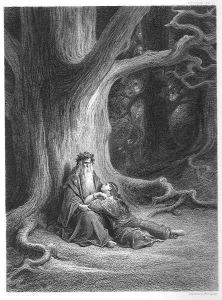
In a later guise, this time as guide to Arthur in the Grail stories, Merlin appeared as a keeper of ancient secrets and wisdom, pertaining equally to that of nature as well as magic. He was later imprisoned by Niviane, a figure who also represented water, as she was known as the Lady of the Lake.
Merlin first meets Niviane, falls in love with her, and lusts badly after her. She refuses him outright, and through her fear or disgust with his demonic heritage, agrees to consent to his desires only if he swears to teach her his magic. She eventually uses his power against him. She finally imprisons him in a place that is described in varying stories as a cave, a tree, or a tower. In the story of the prison as a “tower”, it was told that the tower was like a castle with “invisible walls”. Could this “tower” be a connection to the now destroyed Tour du Tower built by the Templars in Paris in the 13th century?
Returning back to the text: “Count on the Baker to know where Merlin is Imprisoned”, if we are to count 13 (for baker’s dozen) on the alphabet, starting with the letter “a”. When we get to the 13th letter (which, interestingly, is half of our alphabet’s 26 letters) we reach the letter “M”. If we then take that extra little step (which is often suggested for us to do in the book), that of finding the digital root of numbers by summing digits, we can also conclude that 1 + 3 = 4. Therefore, the fourth letter in the alphabet is “D”. Put them together and, voilà. However, “MD” didn’t really add up to much.
But then looking back at all of those down-pointing triangles in the cipher……
On top of the invitation is a star of David, which we know, is produced by overlapping an upright triangle over a downward pointing triangle. Thinking this through a little further it occurred to me, as a friend once pointed out (thanks to N. Beck), that the upright triangle could also been seen as a reference to the Greek letter “Delta” (Δ). Herein, we find both a connection to the letter “D” that is also the upright triangle. Now, if we overlap the “M” with the “Δ “, we arrive at a symbol that markedly appears in history:
Some have pointed out how this symbol was used to represent the Society of Saint Sulpice, and how it is also found on the tomb of Jean-Jacques Olier inside the Mysterious Saint Sulpice Cathedral in France. Others have found the symbol used in association with Rennes Le Chateau, such as that found on the Visigothic pillar originally placed by Sauniere in the garden of the Church of St. Magdalena. I always found it peculiarly similar to the design of the Square and Compasses that are used in Freemasonry. When looking at other Masonic locations in Paris, through my research, I came across this symbol used by the Museum of French Masonry:
Does this symbol here provide a connection between Knights Templar and the Masons?
The Templars, being the Knights of the Temple (“Solomon’s Temple”), can easily be connected to “The Temple” by namesake. However, with the Masons, it requires a little bit of parallel thinking. Although I had already acknowledged a lineage between the “Builders of the Temple” (a common definition of a stone Mason) and the “Knights of Temple”, for some reason it still didn’t create a complete picture for me until considering both their separate timelines and their potential overlap in history in relation to this location. The connection was made in seeing that the early Masons were, as “Operative Builders” of the Temple, the successors to the knowledge entrusted by the Templars after their demise, and thus were also the precursors to the “Speculative Masons” whom were later to emerge. Therefore, it would seem correct in stating that their respective “Head Quarters” would be the same “house” (which is the word “maison” in French by the way), as both the Builders of the Temple and the Knights of the Temple would have had hand in its construction and its consecration.
In retrospect, whereas all of these clues add up to something that appears quite substantial, there is, of course, only one SLIGHT problem with the location of the meeting place being the Tour du Temple in Paris. It is, that the temple, as previously mentioned, was completely destroyed by the nephew of Napoleon (Napoleon III) in the 1800s and therefore doesn’t exist anymore.
But if you go happen to go to Paris and seek out where the Temple once stood, the location can be easily found by the name of one of Paris Metro’s stations: “Temple”. This location is near where the enclosure of the Templar HQ’s walls once stood. Walk a few blocks SE from there, and there is a park called the “Square du Temple”. On your way you can also stop by a cafe called “La Tour du Temple”. (It’s reviews on Google don’t look very good, but you might want to break for some coffee and take in the scenery.) After you’re finished there, walk to the eastern edge of the park and stand in front of the Marie du 3e Arrondissment (3rd District Mayor’s Office). There you will see this:
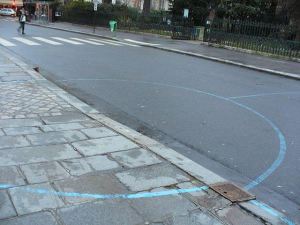
Outlines of where the “Grosse Tour” of the Tour du Temple once stood and the location where Jacques de Molay, and later Louis XVI, were imprisoned.
Here it is on a map, overlayed on a somewhat more modern version of the city:
Is this final point the actual location of the first meeting where Richard Fisher was to meet the Grail Keepers? Others had come up with varying answers, with none of them leading in this direction. Some guessed its location would be in the beautiful forest of Brocéliande, in Brittany, where local legend says Merlin’s tomb is located. Or, in one of the other contested locations of Merlin’s tomb, such as the one found at Marlborough Mound in Wiltshire, England (This was before the location was revealed to be in France). Or, in the cave under Tintagel Castle in Cornwall, England which is named “Merlin’s Cave”.
Among all other paths one could have traveled seeking an answer, I chased down other trails that lead to the Palace of Versailles, looking for Merlin’s “Glass” or “Crystal” castle (as has been described in one legend), or to one of the “Iron and Glass” pavilions built in Paris on the Temple enclosure site in the late 1800s. None of these arrived at a conclusive location, particularly in light of the deciphered clues. In the end, it was this path leading to the drawn remnants of the Tour du Temple that held up to most scrutiny.
It would all appear true, since “The Baker” (Louis XVI) would most certainly have known the place of his own imprisonment. The location also matched the clues related to the persecution date of the Knights Templar. It fit the bill as a “proto-Masonic” headquarters. Also, the current site of the Tour du Temple, which has now been reduced to a ghostly outline, could easily fit the description as a castle with “invisible walls”.
The theory could admittedly use some extra support tying it into the origins of the mythology of Merlin, but perhaps that is another matter to be discovered further on. Perhaps it will be found on the trail following Jacques de Molay as he traveled all over Europe, keeping note also when and where the legends of Merlin and The Grail emerged around the same time. It is still only a theory, and perhaps best proven when other parts of the puzzle are completed and taken as a whole. Only a theory so far, but it has been a real adventure following its trail.
Hayward perseveres in the search for Truth. His determination and dedication for the quest is something to greatly admire. It is a privilege to be able to share part of his journey and findings here. Please feel free to leave comments or questions for him below.
Other Articles by Hayward:
The Skull on the Tomb, The Rose on the Cross

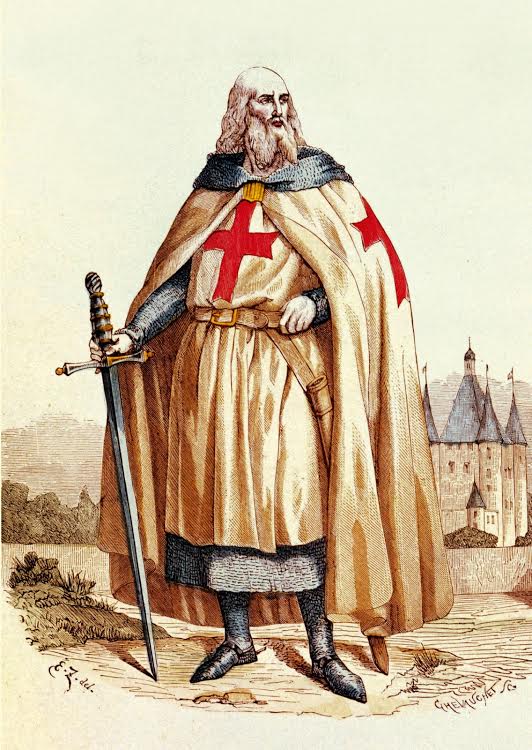


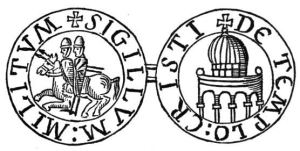

A grand weaving through history! I love it, Hayward. Another wonderful post filled with lots of information. This is one of the reasons I love these treasure hunts; they lead to so many interesting things!
It has been a little while since I’ve worked on this hunt. I will be excited to take a look at it more this weekend.
I really like the subtraction of 680 from 1987 to give 1307…..and then baker’s dozen at 13 to hint this invitation certainly does have something to do with Friday the 13th’s arrest of the Knights Templar. Excellent work.
Will continue to study your post…..
Thanks for sharing, Hayward!
Thank you Jenny,
Much credit goes to members of the Quest4Treasure forum who introduced a number of ideas that initiated the search. It was mostly about seeing the connection between all of the clues that lead to this article. The Ultimate Quest is such an interesting book in that, similar to Maranatha, there is a lot of historic discovery and research involved throughout the process of solving. Other locations hinted at point to the UK, the Cathars in southern France and Malta. So there is yet even more to discover!
That was an interesting read. Thanks for writing it up, the history is fascinating.
Haywar4, your solution of MACHQ, involves a transposition of the letters of PDXHQ by jumping up, or back, 3 letters, for the letters P = M, D = A, K= H and T = Q, but not X?
ADDITION: Thanks, Rubyfelixer, for noticing the above. The article has been edited to exclude that side path and remains focused on the possible location of the first invitation and other subject matter.
Hi Hayward
“Count on the Baker …”
The first thing that came to my mind when I saw this was that the word “Count” could mean count as in numbers, having something to do with the word baker. For example, there are 5 letters in the word Baker. Or B = 2 A = 1, etc.
Yeah, other than that, I’m stumped. A count can be a person of royalty too. I can see you put a lot of work into this. I remember watching a movie about King Author where Alvian imprisoned Author. In the movie, she blew with her breath and Merlin turned to ice.
Great Article!!!
Hi Mark-
Thanks for your comments. I did try to come up with something by counting through the phrase “the baker” and just “baker” in simple gematria and didn’t come up with anything substantial. The idea of “count” relating to a number was the impetus behind the idea of “counting a dozen” such as a baker’s dozen, or 13. In the book’s story, “13” is featured quite prominently and so feels pretty natural of a choice to go with.
In addition to two other invitations which haven’t been clearly solved or explained, there are several images and scraps of paper with sketches and notes which also come into play, creating multiple layers. If you happen to find a copy of the book, I recommend it.
Actually, the bakers dozen idea does kind of make sense. There are 24 hours in day, and 12 hours on a clock, which is round like a circle. The circle symbolizes time, and the baker might want to look at the clock to check when whatever he has baked is done. Perhaps this could be taken to mean that Merlin is “imprisoned in time.” Just a thought. Interestingly enough, both the baker and the magician practice a craft.
Thanks for the recommendation. I might look into it. I’d also like to take a look at some your posts in the Tweleve Forums, when I get the time. I remember you mentioning some pretty interesting ideas there … The type of ideas that I can relate to. 😉
Your introduction of the idea of time is highly apt. In fact, there are several clues in the book pertaining to the subject of time, and I believe it is a big subject. Similar to Maranatha and the “Time Monk” idea (of which I don’t think anyone has tried to explain), there is some pressing urge towards time and either its negation or completion.
Merlin imprisoned in time is a good call. As is the idea that both bakers and magicians are craftsmen.
Correction – she impisoned Merlin, not Aurther (after Merlin taught her magic)
An interesting anecdote:
While I was researching last night I read about this legend that, directly after the execution of Louis XVI by guillotine, a person in the crowd (some speculate that it was a Freemason) ran up to the platform, placed his hands in the blood of the decapitated king, shook the blood off at the crowd, and shouted:
“Jacques de Molay, thou art avenged!”
(Almost 500 years after de Molay was burned at the stake.)
will look into this information
Hi there mates, how is everything, and what you want to say on the topic of this post, in mmy view its genuinely awesome designed for me.
Reeview my homepage :: Fifa 15 Ultimate Team Coins Generator (Hunter)
Howdy, Hunter. Are You sure You’re posting on the right page? 🙂 You know this is a Templar Knights page, right? I don’t know what FIFA 15 has to do with Templar Knights…unless you’re talking about kicking some balls…THAT, and they also make great team players.
On second thought, perhaps your post on this page is well-placed after all.
I do have one serious gripe about the game of soccer, though…and something is going to have to change. It is absolutely ABSURD that coaches…and the entire world…i.e. viewing audience…are not allowed to challenge a ridiculous call from a referee who thinks he’s god…but he’s not. It’s absolutely infuriating when a bad call is made and we’re all told to just shut up and live with it. I mean…we HAVE the technology.
So, Hunter. I assume you work for FIFA. Could you put in a word with the higher-ups, please? Who gives a damn if it “slows down the pace of the game” if the entire soccer game is a farce because of a really bad call, anyway? Please, for the Love of God, Do Something! My Word. Thank you. 🙂
Pingback: The Divine Origin of Nothing » Mysterious Writings
I don’t think the tower where Merlin was imprisoned was a physical tower at all. More like a spell.
Merlin is a myth, a legend. You’re supposed to read it metaphorically or allegorically. I think the implication of a glass or “invisible” tower tells us as such.
Question: Why did the lady of the lake imprison the wild sorcerer and why did he chase after her?
I think the lady of the lake is probably nothing but a convenient metaphor for the seeker of the Holy Grail. The seeker first convinces Merlin to tell all his secrets, and when he/she’s powerful enough, he/she could imprison Merlin himself… but would that be wise?
I believe she represents a ‘threshold’ for the seeker, but as a force of ‘nature’ has the power to consume (or destroy) those in attempt. The couple also be seen as a two-fold representation of the 2 sides of the seeker/counterpart (male, female).
I find an interesting parallel with the Isis and Osiris myth wherein Isis convinces Osiris to provide his secret name in order to heal him.
I think the similarities between John the Baptist and Merlin are deliberate.
Right, and as might be expected by the authors of these stores, who were perhaps ‘more partial’ to John than to Jesus. There is strong evidence to suggest that the Templars were at least partial inspiration for those chivalrous grail knights.
It’s interesting that Merlin, like Jesus, is the result of an immaculate conception. The Holy Ghost becomes a demon in the case of Merlin. That’s probably more telling about the difference between the time when the Holy Grail stories were written and the time when the Gospels were written, than about a difference about their respective origins.
Pingback: A Demon, a Stone, and the Aspirant » Mysterious Writings
Pingback: The Skull on the Tomb, The Rose on the Cross » Mysterious Writings
The Tour du Temple may have been a meeting place for Grail Keepers, but I’m sure there were many others.
Interesting read.
Calling the place Merlin was imprisoned “a cave” isn’t very informative. “A cave” could be any dark place. However, when it’s called a tree or a tower, it’s telling us more. The Tower in the Tarot is hit by lightning. And there’s a lightning described by joining the nodes of the Tree of Life in order. That’s where Merlin is imprisoned.
Mystery of the Templar Treasure
When the first Knight Templar returned from the Holy Land they brought back with them huge amounts of gold, silver and Temple artefacts recovered from under Temple Mount. All this wealth was concealed at various locations and marked by using the Chess Board as a map, each site represented by the effigy of a Knight on the appropriate square: the characteristics and position of the Knight on the board describing the location. Knights with crossed legs are found on black squares. In Temple Church London there are nine stone effigies of Knights one for each location. The effigy of William Marshall the 1st Earl of Pembroke is depicted with his feet resting on a ‘standing’ dog, his pillow is a water pitcher – this perfectly describes the treasure site.
The same story is told in the nine stone effigies in the church of St Mary in the village of Aldworth near Newbury, where they are known as the ‘Aldworth Giants’.
All of the treasures have lain undisturbed since the early twelfth century.
Geoffrey Morgan
Hi Geoffrey,
Your comment is really interesting, but I was wondering if you were able to go in to a little more detail? You say, for example, that the Earl of Pembroke’s effigy perfectly describes the treasure location, but you don’t say how it describes its location.
I’m also not really understanding how the chess board works as a map.
If you’re able to give any more info on this that’d be amazing.
Thanks for your time,
All the best,
Russ